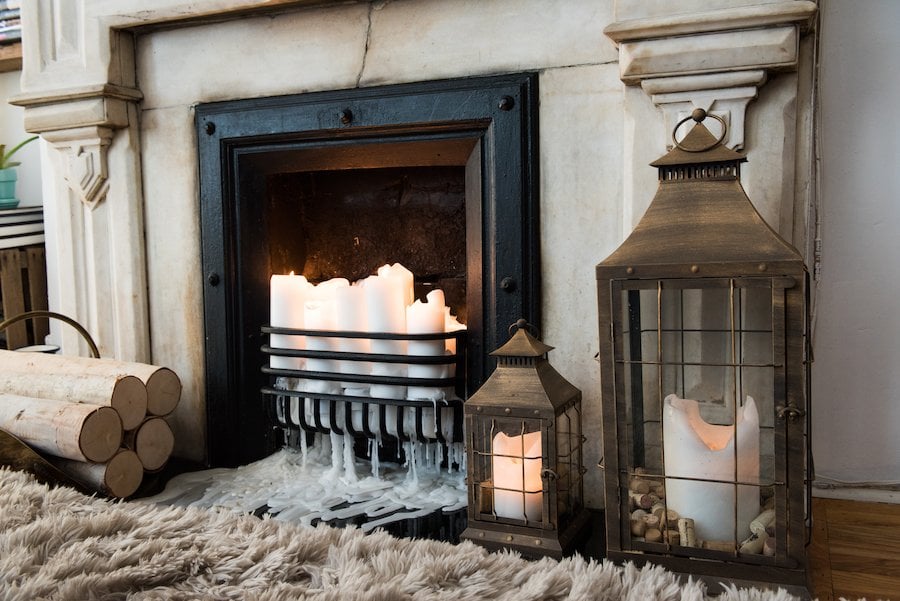In the past few years, the Danish and Norwegian word hygge (pronounced hoo-guh) has entered the American lexicon. But as an attitude and an idea, it’s been a key part of what interior designers have always strived for, says Havenly designer Heather Goerzen.
“All ‘hygge’ means is elements of coziness, and creating a space that’s comfortable and inviting,” Goerzen says. “As a design principle, coziness is not new. But we’re seeing a resurgence lately because our culture is so plugged in, so charged, so on the go. That means notions of resting and appreciating the little things are something we as Americans want to take heed of,” she says. “We’re recognizing the need to slow down, and that’s why we’re seeing hygge have so much popularity in the mainstream design world right now.”
Goerzen says fall and winter in particular are a natural time to turn inward and slow down, which makes hygge particularly resonant during cooler months. “When we’re in that summer or springtime state of mind, it’s more about life is awakening, the grass is thawing, we’re trading our boots for sandals, and we’re aching to get outside. These months are our more active time of year. Compare that with fall and winter approaching—that’s more of a hunker down and bundle up frame of mind,” she says. A yearning for hygge during fall and winter is even as simple as the time change: it gets dark earlier, so we want to be at home under a blanket with a book in our hand. “We have seasonal rhythms in life, and there’s something about winter that says slow down, stay in, rest for a bit,” she says. “It’s our hibernation season.”
Although Goerzen acknowledges hygge’s Scandinavian roots can influence aesthetic—think elements like sheepskin or wool and light-tone woods—it’s important to remember that any design style can support hygge. “It’s definitely more mindset than specific design elements,” Goerzen says.
So, now that we know what hygge is and why we might be craving it this time of year, how do we incorporate it into our homes? Whether your home is mid-century, minimalist, glam, globally influenced, or farmhouse (or anything in between!), it’s surprisingly easy to layer in hygge.
“I think there are few elements that come to the top,” Goerzen says. “For me, there’s an element of hygge that is all about cozy, soft, welcoming textures. It doesn’t matter what design scheme you have—textural elements transcend a lot of styles and are easy to incorporate through blankets or throws, pillows, and even hard surfaces, such as using a dining or side table in a natural, organic wood.”
Another main element of hygge for Goerzen is candlelight. She suggests taper candles, an extremely affordable pick that adds ambience and softness to any space and fits with a range of design style.
Then, there’s palette to consider. “Hygge tends to be very recessive, soft, and neutral in its tones, and you can bring in a relaxed palette for any type of room design. Bohemian palettes can lean on neutrals, as can mid-century palettes and so on.” You can also layer in elements of hygge through practical items like mugs or a robe.
In general, Goerzen suggests picking hygge decor items that “feel a little weathered,” because they suggest a past and a story. However, her ultimate suggestion is remembering that hygge is a mindset, not a design style. Those worn, cozy socks you pull out every winter? That’s hygge. A glass of red wine and a bath at the end of a long day? That’s hygge, too.
“Hygge is any element that produces a relaxed vibe for you, and that can translate to anywhere and everywhere in the home,” she says.
Shop a few hygge-approved picks below, and get started with our style quiz to create a cozy, curated space at home.
Textured pillow
This gray-and-ivory pillow gets major hygge points for its neutral palette and ample texture through a chunky weave, decorative trim, and tassels. Even better? It comes with a feather down insert for peak coziness.
Stoneware mugs
This set of stoneware mugs captures the artisan vibe of a potter’s studio. We love how they’re extra weighty — a substantial vessel for tea, coffee or cocoa.
Reclaimed wood coffee table
While the clean lines of this reclaimed wood coffee table would suit minimal styles and global styles, it’s inherently hygge due to its organic, weathered texture.
Area rug
If hygge is all about feeling cozy, you’re going to need some softness underfoot. This area rug incorporates the understated palettes of hygge in an abstract weave that can transcend several design styles.
Taper candle holder
You can score taper candles just about anywhere — even the grocery store! But something to display them is another story. This rustic bronze taper candle holder has a beautiful patina and subtle sheen.

